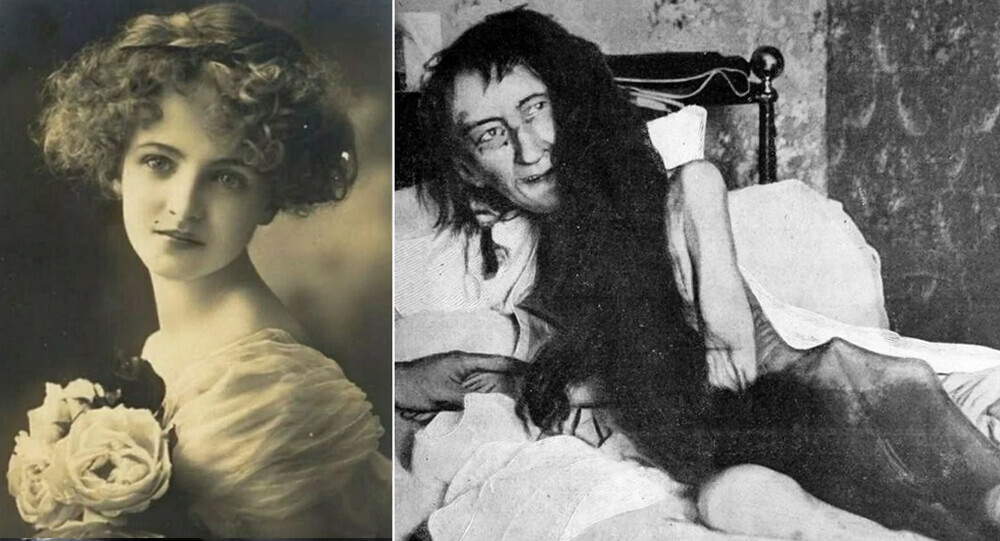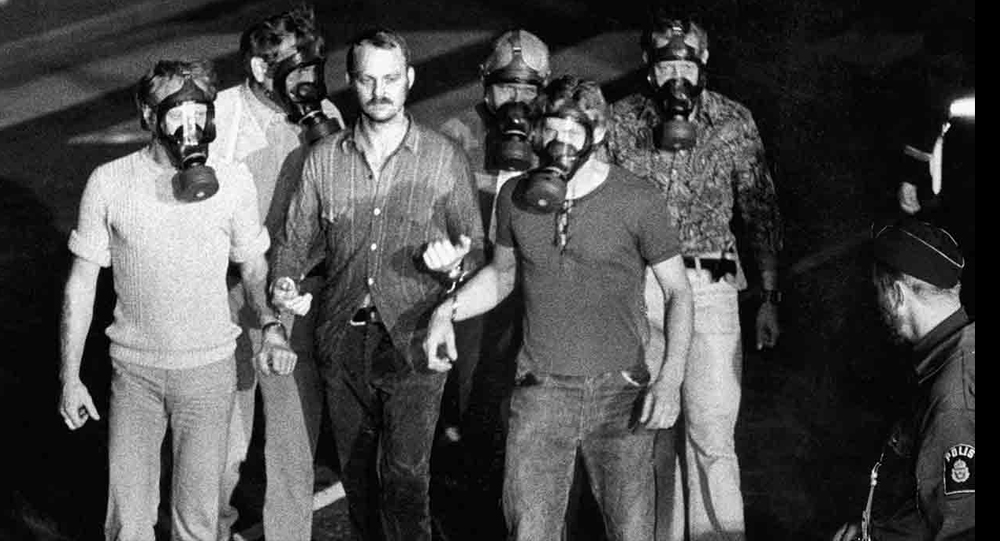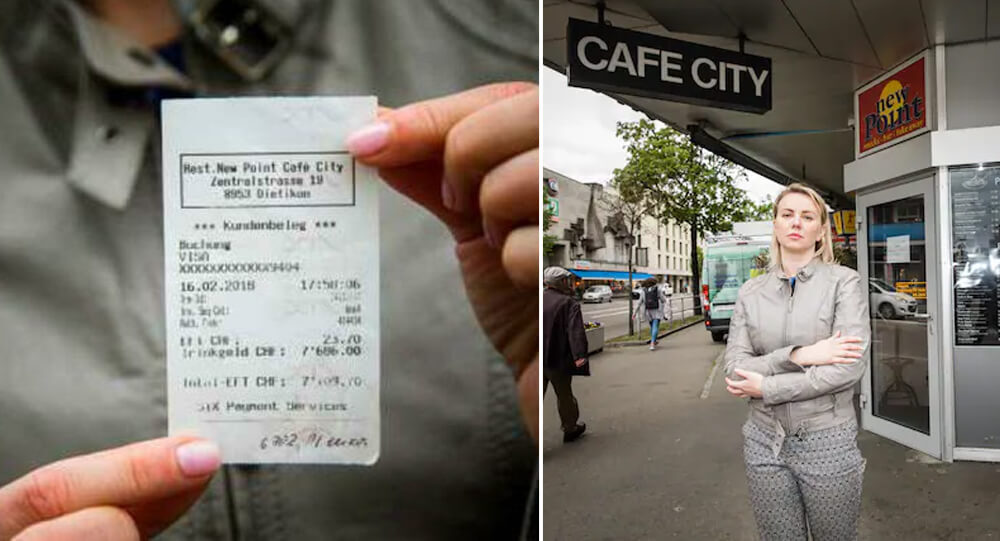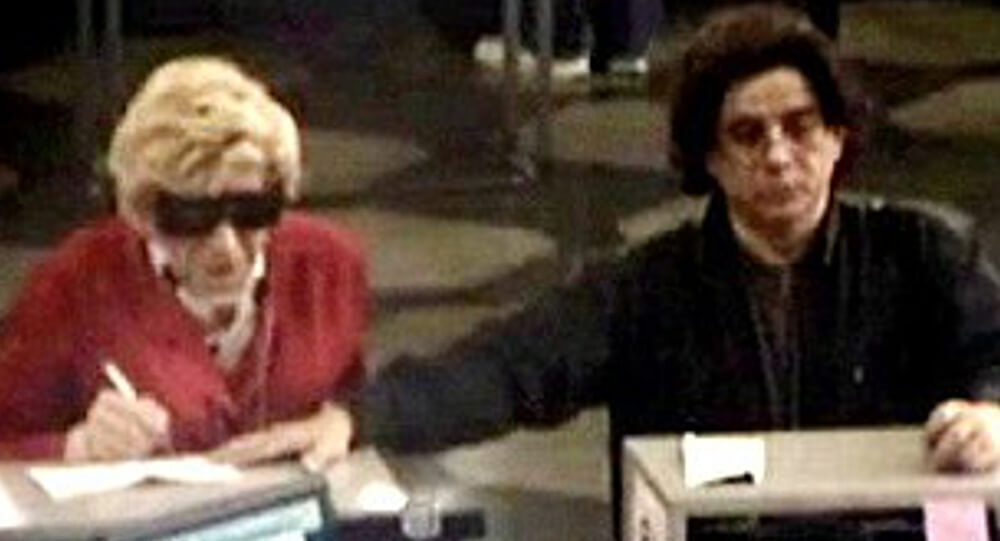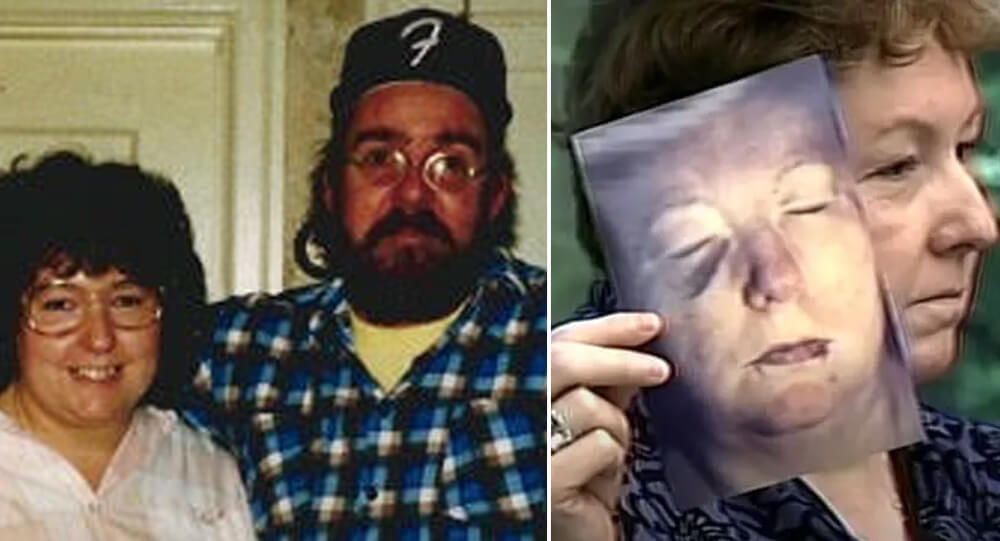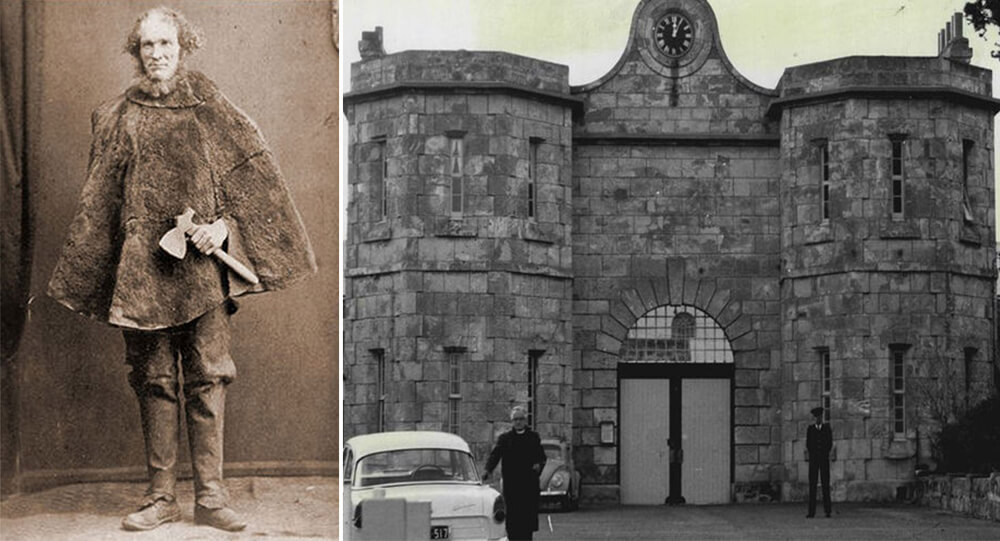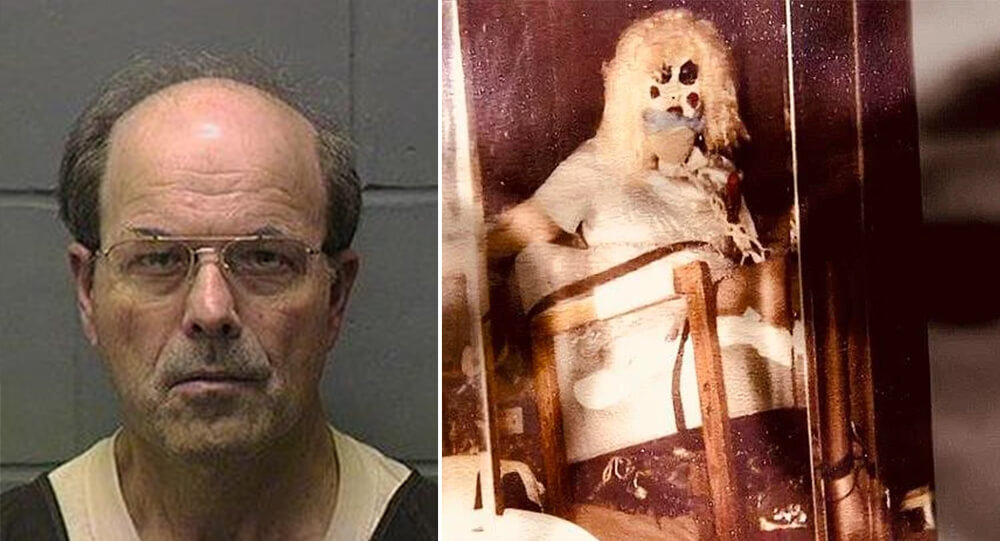
Dennis Lynn Rader, an American serial killer, was born on March 9, 1945, and between 1974 and 1991, he killed 10 people in Sedgwick County (in and around Wichita, Kansas). According to his method of operation, he was referred to as the “bind, torture, and kill” killer (or “BTK strangler”). During the time that the murders occurred, he wrote boastful letters to the police and to local media outlets outlining the specifics of the killings. He stopped sending letters for a while in the 1990s, but started up again in 2004, which resulted in his 2005 arrest and subsequent conviction.
Personal life
Rader graduated with an associate’s in electronics from Butler County Community College in El Dorado in 1973. That fall, he started classes at Wichita State University. He earned a bachelor’s degree in administration of justice there in 1979. On May 22, 1971, he wed Paula Dietz; they had a son and a daughter.
Like two of his first victims, Rader worked as an assembler for the Coleman Company from 1972 to 1973. In 1973, he then briefly worked for Cessna. Rader worked for ADT Security Services, a Wichita-based company that sold and installed security systems for commercial buildings, from November 1974 until he was fired in July 1988. He worked in a number of roles, including installation manager. There, it was thought, he learned how to trick home security systems.
Prior to the 1990 federal census, Rader oversaw the field operations for the census in the Wichita region in 1989.
Neighbors recalled him as occasionally overzealous and extremely strict; one neighbor complained that he euthanized her dog without cause. Rader was hired in 1991 to be supervisor of the Compliance Department at Park City, a two-employee, multi-functional department in charge of “animal control, housing problems, zoning, general permit enforcement and a variety of nuisance cases.” Rader was fired by the Park City Council on March 2, 2005, for failing to show up for work or call in; he had been detained for the murders five days earlier.
Rader was a member of the Sedgwick County Animal Control Advisory Board and the Board of Zoning Appeals (appointed in 1996 and resigned in 1998). He also belonged to Christ Lutheran Church, a small congregation of 200 Lutherans close to his old high school. He had been a member for about 30 years and was now the Congregation Council’s president. He led Cub Scouts as well. His son earned the Eagle Scout rank. In agreement that Rader’s wife’s mental health was in danger, Sedgwick County District Judge Eric Yost waived the customary 60-day waiting period and granted an immediate divorce for her on July 27, 2005, following her arrest. The 33-year marriage was ended because Rader did not object to the divorce. In her divorce petition, Paula Rader claimed that the marriage had negatively impacted both her physical and mental health.
Modus Operandi
Rader casually referred to his victims as his “projects” and once compared the killing of his victims to the killing of animals by saying that he “put them down.” He also used personal slang for his murderous tools.
Guns, tape, rope, and handcuffs were all part of Rader’s “hit kit,” a briefcase or bowling bag that he used to carry out murders. Additionally, he brought along “hit clothes” that he planned to wear only for the crimes and then throw away.
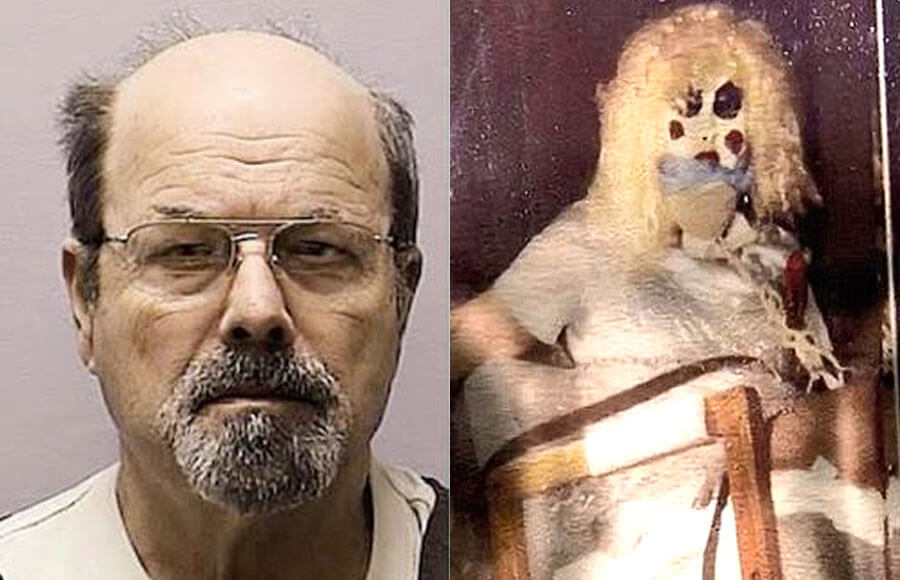
For his murders, Rader established a pattern. Until he discovered a potential victim, he would roam the city. After that, he would stalk the target until he understood how they lived and when it would be most advantageous to attack. In order to continue the hunt in case one victim didn’t work out, Rader frequently stalked multiple victims at once. Rader would break into the home, disconnect the phone lines, and hide until his victim returned from work.
The alias BTK, which Rader gave himself, also guided his actions. Rader bound, tortured and killed his victim. Once his victims had regained consciousness, Rader would let them breathe again before strangling them once more. He would keep up the pattern, putting them in near-death situations while getting arouse at the sight of their pain and grief. When they were dead, Rader would strangle them and then masturbate until ejaculate on the corpse.
Arrest and conviction
The BTK Killer’s case had been closed by 2004. Then, Rader wrote to the police to take responsibility for a murder that had not yet been linked to him. The victim’s DNA was taken from beneath her fingernails, and it gave the police previously undiscovered evidence. In an effort to identify the serial killer, they then started testing the DNA of hundreds of men. A total of 1100 DNA samples would be collected.
To gain the trust of the BTK Killer (Rader), the police communicated with him. Then, during one of his communications with the police, Rader enquired as to whether information from floppy disks could be tracked. In response, the police department claimed that there was no way to determine what computer a particular disk had been used on, even though there were ways to do so. The police department was immediately notified of Rader’s message and floppy, and they quickly reviewed the Microsoft Word document’s metadata. They discovered from the document’s metadata that a man by the name of Dennis had created it. A connection to the Lutheran Church was also discovered.
The police were able to identify a suspect—Dennis Rader, a Lutheran deacon—after conducting an Internet search for “Lutheran Church Wichita Dennis” and discovering his family name. Furthermore, BTK’s black Jeep Cherokee was known to the police. When the detectives passed Rader’s residence in their car, they noticed a black Jeep Cherokee parked outside.
Although the police had solid circumstantial evidence against Rader at this point, they still lacked enough concrete proof to hold him. To test the DNA of a Pap smear Rader’s daughter had taken at the University of Kansas medical clinic while she was a student there, they controversially obtained a warrant. The killer was closely related to Rader’s daughter because the DNA from the Pap smear and the sample from the victim’s fingernails were nearly identical. The police required this proof in order to make an arrest.

Rader was arrested on February 25, 2005, not far from his Park City home, and he was charged with the BTK slayings. “The bottom line… BTK is arrested,” Wichita Police Chief Norman Williams said at a press conference the following morning. Rader pleaded guilty to the killings on June 27, 2005, describing his crimes in graphic detail in court.
He was given 10 consecutive life sentences, one for each murder victim, on August 18, 2005. This included nine life sentences with the option of parole after 15 years each and one life sentence with a 40-year parole eligibility period. It implied that Rader would serve a total of 175 years in prison before becoming eligible for parole. This outcome ensured that Rader would serve the remainder of his life behind bars without the chance of parole.
Because Kansas did not have a death penalty when Rader committed his crimes, he was not eligible for the death penalty. In 1994, Kansas’s death penalty laws were reinstated.

Woman found guilty of murdering her husband after a parrot repeated the victim's 'last words'
In 2017, a woman named Glenna Duram shot her husband five times before attempting suicide. Soon after, the couple’s pet African Grey parrot, the only witness to the crime, started repeating the words “don’t f*****g shoot!” It is thought to have been the pair’s last exchange. Duram survived and was found guilty of first-degree murder.

True Story: Russian Pilots Held by Taliban Fought Back and Flew to Freedom
A Russian cargo plane was captured by the Taliban in Afghanistan with Seven crew members aboard. After being held captive in Kandahar for over a year, the crewmen were able to overpower their captors, retake their plane and fly it out of Afghanistan to safety.

Chilling Story Behind the Amber Hagerman’s Murder And The AMBER alert system
Amber Hagerman is the reason we have the Amber alert or a child abduction emergency alert system. As of April 2019, 957 children rescued specifically because of AMBER Alert. To this day, the Amber behind Amber alert is still waiting for justice.

The Great Greek Swimming Pool Scandal: When Satellites Exposed a Tax Evasion Wave
Only 324 residents of a wealthy neighborhood in Athens admitted to owning swimming pools on their tax returns. To verify the truth, Greek tax authorities studied satellite photos of the area and found a total of 16,974 pools. The majority of people had simply lied about their assets to save on taxes.

A man faked his death in 2016 after his Mexican wife plotted to kill him by paying a hitman $2,000
In 2016, a guy faked his death after his Mexican wife plotted to murder him by hiring a hitman $2,000. He cooperated with the FBI to create fake murder images, which landed his wife in jail for 20 years.

Blanche Monnier: Imprisoned For 25 Years For Falling in Love
Blanche Monnier, she was a French woman noted for her beauty, she wished to marry an old lawyer that her mother disapproved of, so she locked her in a small dark room in her attic for 25 years.

'Super obedient' lookout parrot trained by Brazilian drug dealers is seized by police
In 2019, police in Brazil seized a 'super obedient' lookout parrot trained by drug dealers. According to reports, the bird had been taught to alert criminals to police operations by shouting: "Mum, the police!" As soon as the police got close, he started shouting.

The 2007 Mauritanian Flight Hijacking That Passengers Turned Into Victory
In 2007, a tense hijacking aboard an Air Mauritania flight turned into an extraordinary story of quick thinking and passenger bravery. When a gunman took control mid-flight, the pilot covertly warned passengers in French—a language the hijacker didn’t understand—that a sudden bumpy landing was imminent and urged them to use the moment to overpower the attacker. The passengers bravely followed the plan, dousing the hijacker with boiling water and subduing him, transforming fear into triumph. This article relives the harrowing incident and highlights the courage that saved lives on board.

Albert Einstein’s brain after it was stolen from his body
Albert Einstein's brain was taken by the opportunistic pathologist who performed his autopsy hours after he died and kept in two jars for 30 years. The stolen brain of Albert Einstein was preserved in a cookie jar for 30 years until being discovered by a journalist.

Quaker Oats Fed Children with Radioactive Oatmeal
In the 1940s and 1950s, Quaker Oats and MIT conducted experiments on radioactive iron and calcium-containing cereal. The diet was part of a study to see if the nutrients in Quaker oatmeal traveled throughout the body. In January 1998, a $1.85 million settlement was reached for 30 victims who came forward.

Scientists separated triplets at birth for a controversial experiment and had no idea what they were doing
As part of an experiment, a set of triplets was intentionally separated at birth and given to three sets of parents from different socioeconomic backgrounds. It was discovered in 1980, when two of the triplets attended the same college.

The Birth of Stockholm Syndrome: The 1973 Bank Robbery That Changed Psychology
In 1973, a botched bank robbery in Stockholm, Sweden, led to a six-day hostage crisis, where captives began defending their captors—giving rise to Stockholm Syndrome. Strangely, one hostage later befriended a robber, and another raised money for their legal defense, baffling psychologists and law enforcement alike!

A woman accidentally tipped $7,723 for coffee and some cake and never get the money back
In 2018, a woman accidentally paid $7732 for a cup of coffee and a cake at a Swiss café after accidentally entering her PIN code as a tip. She never received a refund.

How a Pizza Delivery Saved a Hostage in 2015
A pizza delivery once helped end a hostage situation! In 2015, a pizza order placed by a woman being held hostage included a hidden message for help. The pizzeria staff alerted the police, leading to her rescue..!

The truth behind the murder of Cara Knott
After the murder of Cara Knott in 1986, a local news station filmed a ride-along segment with a highway patrol officer named Craig Allen Peyer who talked about women’s safety and gave tips on what to do when stranded on the road. That same officer later turned out to be the “Knotts killer.” He was convicted of the crime in 1988.

A woman finds her ex-boyfriend living in her attic 12 years after they broke up
Most people have heard of "things that go bump in the night," but for one South Carolina lady, that "thing" was her ex-boyfriend, whom she discovered living in her attic more than 12 years after they broke up.

Reason Behind The Suicide Of Christine Chubbuck Live On Air
Actor Rebecca Hall had serious reservations about tackling the macabre story around why Chubbuck killed herself in 1974. So what changed her mind?

Man who robbed bank to get away from wife sentenced to home confinement
In 2017, a 70-year-old man robbed a Kansas City bank, then sat down in the lobby waiting for the Police to arrive stating he’d rather live in jail than with his wife. He was arrested but rather than thrown in a cell he was sentenced to 6 months of home confinement.

Man dressed up as his dead mother to keep home, benefits
A 51-year-old man in Brooklyn named Thomas Parkin dressed up as his dead mother Irene for six long years since 2013 and collected her social security checks. He did other real estate frauds too that totaled up to $115,000.

The Horrific story of Ariel Castro and the Cleveland abduction
Cleveland abduction victims Gina DeJesus, Michelle Knight, and Amanda Berry were forced to live in Ariel Castro's house of horrors for 10 years. He raped and beat them until they escaped in 2013.

The Bizarre Courtroom Act of Serial Killer Rodney Alcala: When a Killer Played Lawyer
Serial killer Rodney Alcala acted as his own attorney in his trial. For five hours he interrogated himself on the witness stand, asking questions addressed to "Mr. Alcala" in a deep voice and answering them in his normal voice.

The youngest person executed, George Stinney Jr was proven innocent
In 1944, George Stinney Jr. was 14 years old when he was executed in South Carolina. It took only ten minutes to convict him — and 70 years to exonerate him.

Susan Kuhnhausen Killed the Hitman Sent to Kill Her
Susan Kuhnhausen's ex-husband hired a hitman to assassinate her. Susan "made a decision to live" in that terrifying moment.

The story of Nike's famous tagline "Just do it"
Nike’s inspiration for their slogan “Just do it.” came from a man who was about to get executed, and his final words to the firing squad was “let’s do it!”

Moondyne Joe: The story of Australia's most notorious prison escapee
A man named Joseph Bolitho Johns (A.K.A Moondyne Joe) broke out of Australian prisons so many times that the police were compelled to build a special cell just for him. He escaped from that as well.






